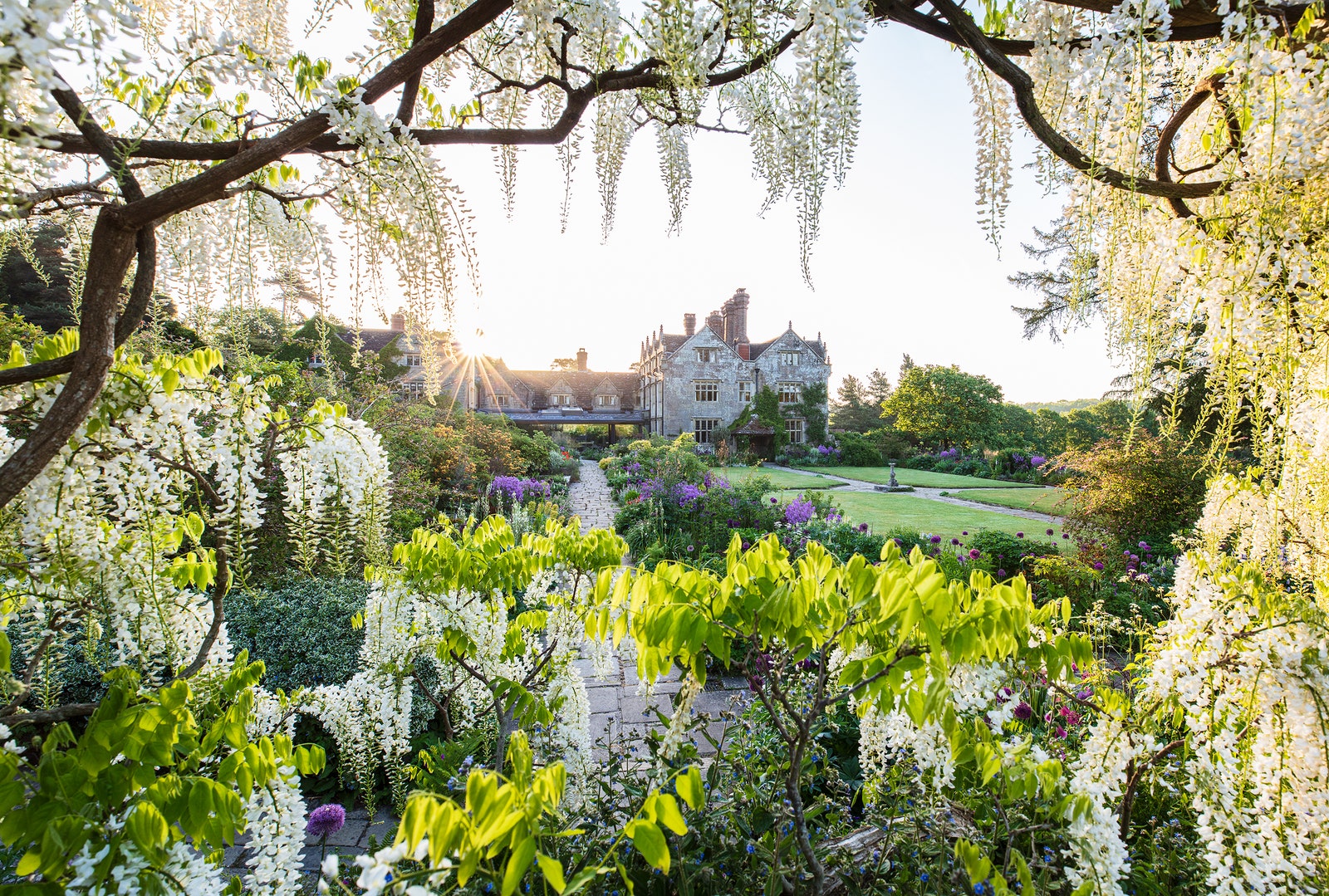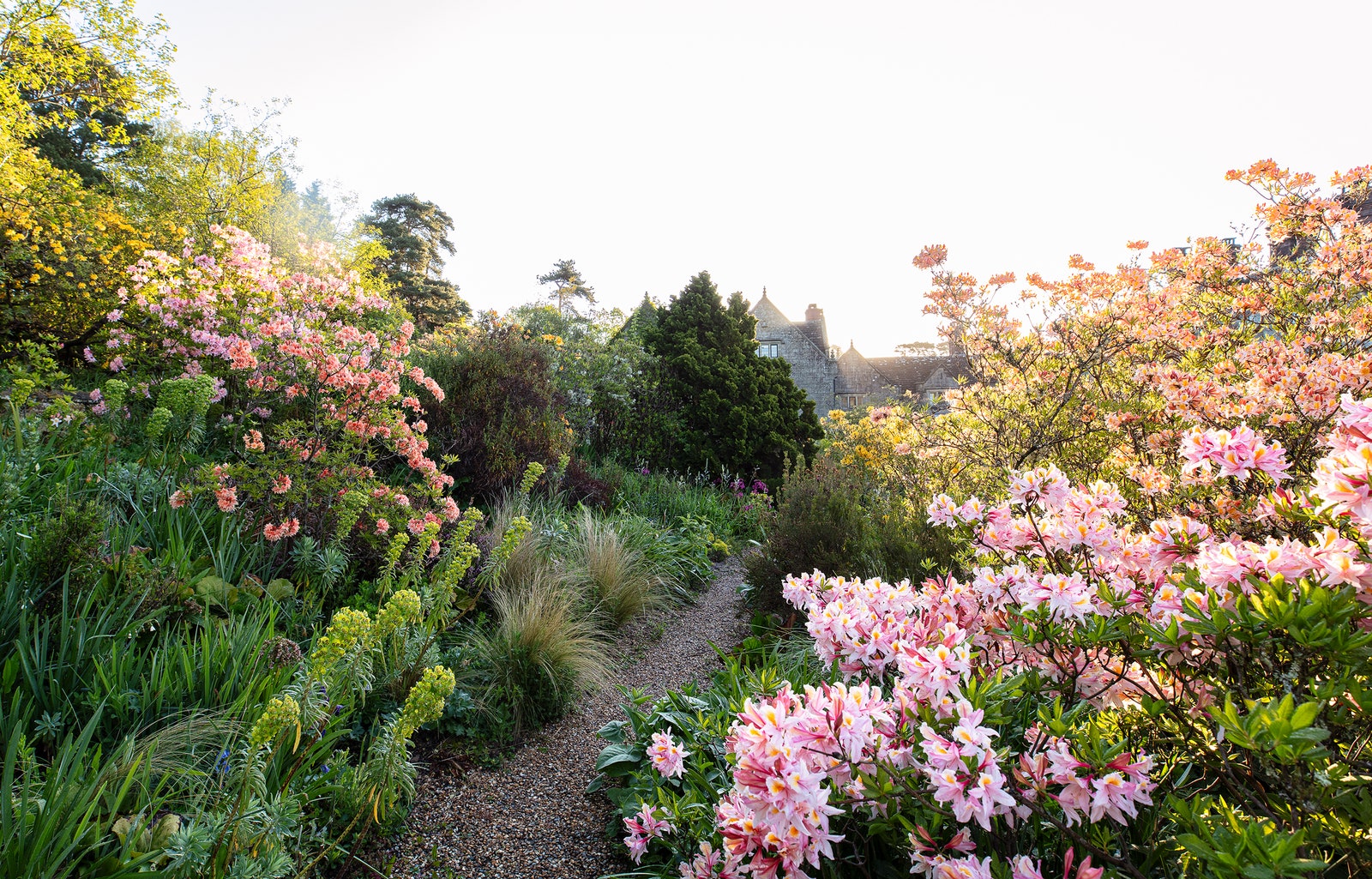Without naming the most grotesque examples of tree mutilation in England, it is clear that much beauty is lost in our gardens by the stupid and ignorant practice of cutting trees into unnatural shapes,” wrote the Victorian-era gardener William Robinson in Gravetye Manor: Or Twenty Years’ Work round an Old Manor House (1911). Robinson’s fighting words were laid out in the preface to his book, an account of the decades he spent creating his garden at the Elizabethan house of Gravetye Manor in Sussex, England, and recently reproduced in facsimile by Rizzoli alongside stunning contemporary photographs.
Born in Ireland in 1838, Robinson was just nine when the Great Famine descended, and he began working as a garden boy before he was a teenager. Over the following decades, he would labor in the gardens at Regent’s Park, travel the world to learn about botanical specimens, and publish more than 70 books. When, in 1934, he was offered a knighthood, he politely refused: “I feel I must leave life as I entered it, and therefore decline with renewed thanks,” he said.
After his death in 1935, at the age of 96, Robinson faded somewhat into obscurity. But during his life, he shifted the entire idea of what a garden could be. “There are really two styles,” Robinson wrote, “one straight-laced, mechanical, fond of walls or bricks, or maybe gravel…fond too of squirting water to an immoderate degree.” The other, he wrote, unfolds “with true humility and right desire…accepting nature as a guide.” The latter philosophy—based on conservation, plant ecology, and native beauty—might seem a product of the 21st century more than the 19th, but it is Robinson’s vision that contains the seeds for the wild gardening movement itself.
No matter how in tune with nature a garden is, however, it takes a certain degree of maintenance. During World War II, Canadian troops were stationed at Gravetye (pronounced grave-tie)—and the garden fell by the wayside. The house was developed into a hotel in 1958, but when that era came to an end, the gardens had descended into disrepair. In 2010 there was revived attention to Robinson’s vision, with new owners and a new head gardener, Tom Coward (who, in the course of his long career, he says, spent a few years working on grounds belonging to Paul McCartney). When he took the job, Coward confronted a landscape choked by deep-seated perennial weeds, plagued by crumbling infrastructure and a voracious deer population. The new proprietors also wanted Gravetye to continue as a hotel. (A Michelin-starred restaurant has since been added, pulling many of its ingredients directly from the garden.) But that, too, posed a challenge: “Because the hotel is never shut,” Coward says, “we always have to look our best.”
More than a decade after Coward began at Gravetye, the gardens are at a pinnacle, and their lush cacophony is captured in the images published with Robinson’s text—which is not just a historical artifact, but a living guide to the possibility of a garden, rendered stunningly vibrant. “What we’ve been doing,” says Coward, “is moving it forwards and employing the principles of William Robinson, but not being dogmatic.” The garden, as Coward points out, was constantly changing, even during Robinson’s life—it wasn’t until a visiting artist pointed out that a rigid hedge was creating an unpleasant formality in one section that he replaced it with roses and clematis. When Robinson began his life’s work—and the only garden he actually built and designed for himself—he was timid about introducing any bright hues. “The simple form and the colour of the house were so beautiful that all had to be done in relation to them,” he wrote in an early passage.
In the late spring, when Coward and I speak, alliums are bobbing their purple heads while lacy white wisteria drip from pergolas. But, somewhat surprisingly, it is February that Coward loves best. During the summer, he says, “you’re just completely overwhelmed; it’s the most beautiful time, but you can’t enjoy it.” Whereas in the earliest months of the mild British spring, when the snowdrops and narcissi emerge, “anything is possible.”

















